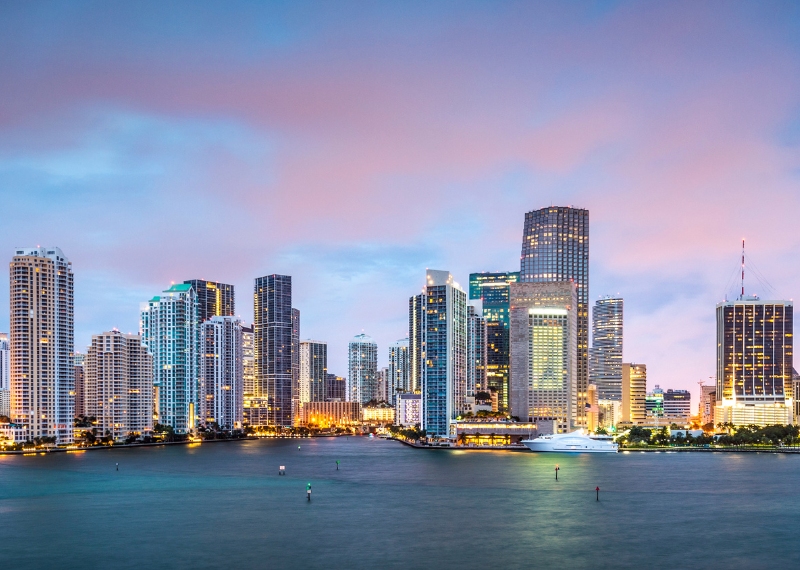Why does moving cost so much? $2,000 to $5,000 can be pretty steep. But if you understand all the factors behind the price, you can also take some steps to save some money. Let’s take a look at what goes into your moving estimate:
1. Distance
As we mentioned earlier, the distance of an interstate move is probably the biggest factor behind your price. More miles, more money. Unfortunately, New York and Miami are almost 1,300 miles apart, but at least you’re not dealing with something crazy like Maine to California, or Seattle to the Keys.
2. Weight/Volume
Neck-and-neck with distance is the physical size of your move. If you have a lot of stuff to load up into the truck, it’s going to come out of your wallet.
Movers will usually assign a weight (in pounds) or a volume (in cubic feet) to all of your belongings. Our advice? Get rid of anything you don’t want before you shop for quotes. Sell it, donate it, junk it - just don’t pay to move it.
3. Packing Services
Packing is one of those add-ons that seems optional, but only if you’re a real masochist. Doing your own packing is pretty much a one-way ticket to crying on the floor before going back to Home Depot for more boxes.
Take it from us: packing services are worth the money. Your movers can handle the bubble wrap, and you can sit back, relax, and not waste all your time.
4. Custom Moving
We’ve seen it all, from vintage motorcycles to collections of anime figurines. Sometimes at the same apartment. We’re not going to judge you for your fragile, breakables, or bulky items, and neither will your movers. But you may want to shell out a little extra for custom crating and hoisting to keep everything safe!
5. Access Fees
Here’s a fun activity: Go outside. Seriously. Walk from your front door to the street, and take notes about all the obstacles you had to deal with.
Any elevators? Flights of stairs? Long hallways? Gates? These are all obstacles your movers will have to deal with, too. Access fees are unavoidable, but you should still call up your moving company ahead of time so there aren’t any unpleasant surprises.
6. Shuttles
Long-distance movers typically use big rigs for long-haul transportation. These are those big ol’ semi-trucks you see on the highway. They’re great on the open road, but not so great in the city. In fact, some cities don’t let these trucks park on their streets at all. In these cases, your movers will have to park the main truck out in the sticks, and use a smaller box truck or moving van to ferry your belongings back and forth. Not cheap, not convenient, and courtesy of city hall.
7. Insurance
Sometimes it happens. Things get dinged up on long-distance moves, and sadly, damaged items are a fact of life in the moving industry. Movers offer basic insurance coverage, but it’s only good for $0.60 per pound. How much does a PS5 weigh, like 10 pounds? Think it’s worth more than $6.00? You better shell out a little extra for full-value insurance.
8. Tips
Yes, inflation is ruining everyone’s lives. Those “30%, 40%, and 50%” tip options are unacceptable. Y’know what’s also unacceptable? Shafting your movers.
They’re doing some seriously hard work, and it takes a lot more elbow grease to load up a piano than to turn an iPad around at a cafe. Don’t be cheap. 15% to 20% is a good amount, to be split up across your whole moving crew.




